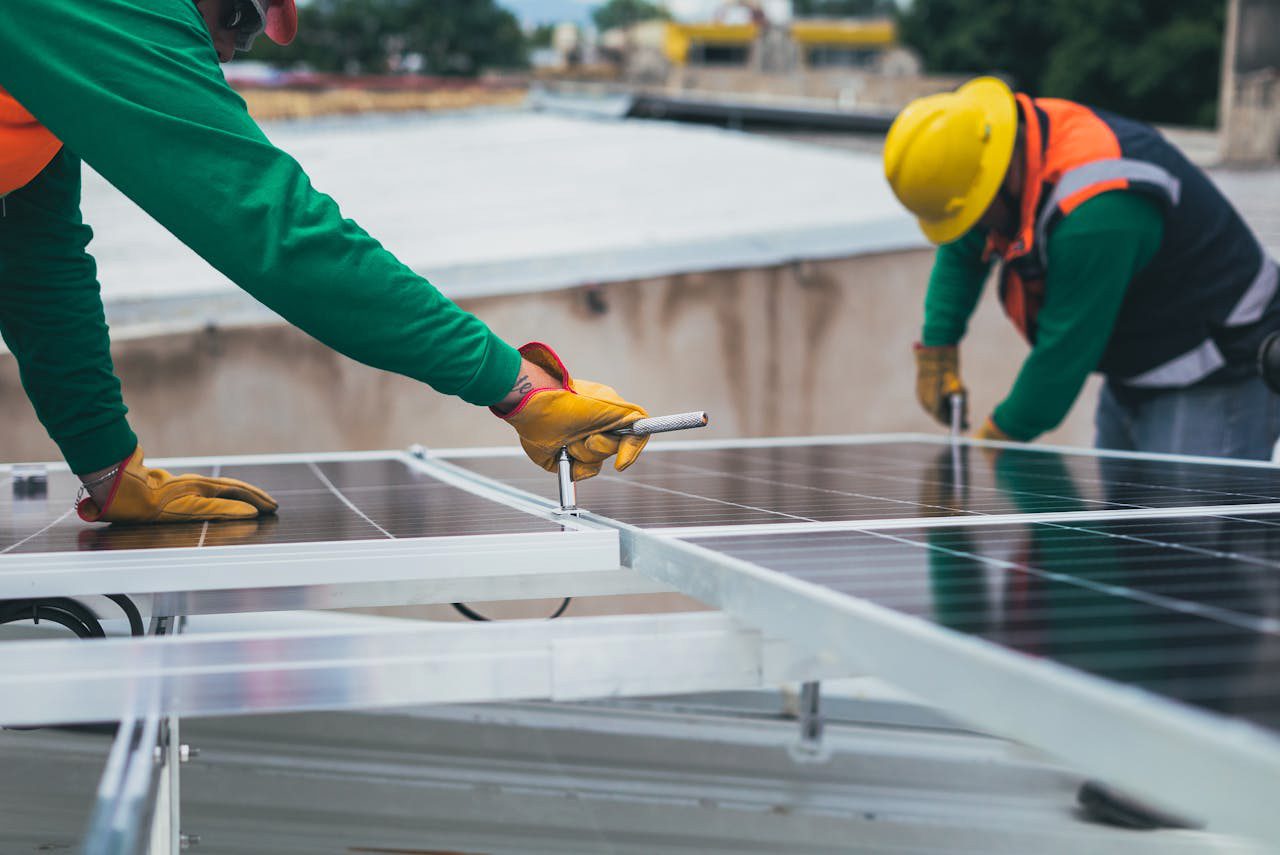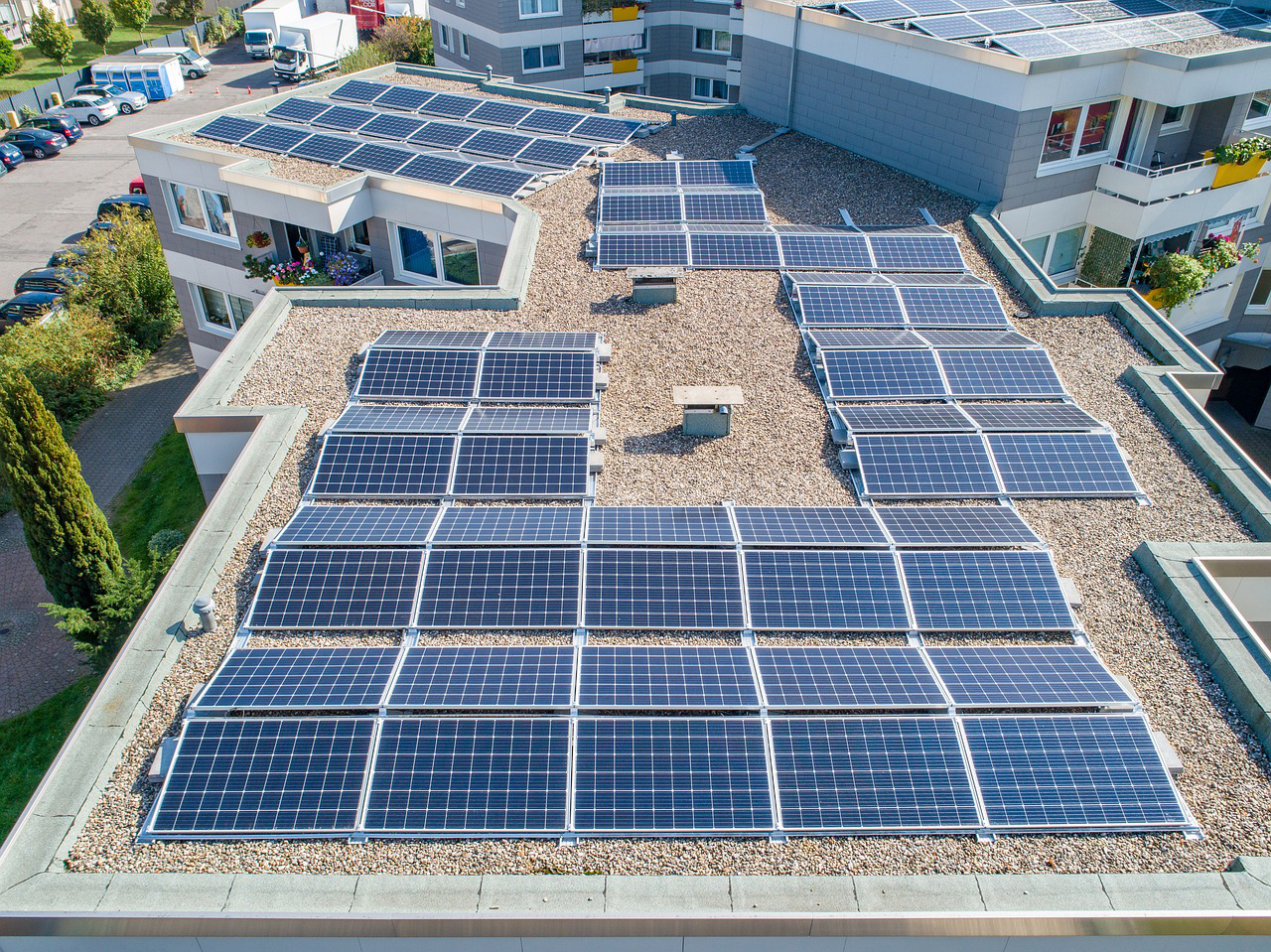The solar energy revolution is on the horizon, heralding a new era of clean, renewable power. At the heart of this transformation are solar panels, batteries, and inverters – the critical components that harness, store, and convert sunlight into electricity. This trio embodies the synergy of innovation and sustainability, driving us toward a future where energy is not only abundant but also environmentally friendly. As we stand on the cusp of this revolution, understanding these technologies becomes paramount in realizing their potential to change our world.
https://www.pexels.com/photo/selective-focus-of-installing-on-solar-panels-8853499/
Solar Solutions Differ From Country To Country
The adaptability of solar solutions across different countries is a testament to the versatility and global appeal of solar energy. Factors such as geographical location, climate, and economic context significantly influence the implementation and efficiency of solar energy systems. For instance, quality solar solutions in Australia are expected to generate more power than those installed in northern Europe, where the sun is relatively scarce. Additionally, access to capital and government incentives can impact the affordability and availability of solar solutions, ultimately shaping their adoption rates.
Types of Solar Panels
Choosing the right type of solar panel is essential for maximizing energy efficiency and cost-effectiveness. The solar market primarily offers three types of solar panels: monocrystalline, polycrystalline, and thin-film.
Monocrystalline Panels are recognized for their high efficiency and sleek aesthetics. Made from a single, pure silicon crystal, these panels offer the highest efficiency rates because they are the most effective at converting sunlight into electricity.
Polycrystalline Panels, made from multiple silicon crystals melted together, are slightly less efficient than monocrystalline panels but come at a more affordable price point. They are easy to recognize by their blue, speckled appearance.
Thin-film panels offer the most versatility of the three types, being lightweight and adaptable to various surfaces. They are made by layering thin photovoltaic material onto a substrate. Although they are the least efficient in terms of space, their lower cost and flexibility make them suitable for large-scale installations or areas where space isn’t a constraint.
Solar Batteries
An integral component of the solar energy revolution is solar batteries, which play a crucial role in energy storage and power management. Solar batteries allow for the storage of excess electricity generated during peak sunlight hours, which can then be used during periods of low sunlight or at night. This capability is vital for ensuring a reliable and consistent power supply, making solar energy a more viable alternative to traditional energy sources.
Lithium-ion batteries are the most popular choice in solar storage due to their high energy density, long life span, and efficiency in charging and discharging. They are pivotal in residential solar systems and large-scale solar installations alike, providing flexibility in energy use and contributing to the reduction of carbon footprints. With advancements in technology, the cost of solar batteries is gradually decreasing, making solar energy systems more accessible and affordable for a broader audience. The evolution of solar battery technology continues to unlock new possibilities for energy independence and sustainability, marking a key development in the solar energy sector.
Inverter Essentials
Integral to the solar energy system, inverters play a pivotal role by transforming the direct current (DC) electricity generated by solar panels into the alternating current (AC) electricity used in homes and businesses. This conversion is crucial, as most appliances and electrical systems operate on AC power. There are primarily three types of inverters utilized in solar installations:
String Inverters are the most commonly used and work by connecting a string of solar panels to a single inverter. They are cost-effective and efficient for systems without shading issues but may not be optimal for roofs with multiple orientations or partial shading.
Microinverters, in contrast, are installed on individual solar panels. This arrangement maximizes the output of each panel by converting DC to AC at the source, improving overall system efficiency, especially in varied shading conditions. Microinverters also allow for easier expansion and monitoring of individual panel performance.
Hybrid Inverters combine the functionalities of a standard inverter with a battery inverter in one unit. This type is particularly beneficial for solar systems designed for energy storage, as it streamlines the integration and management of batteries.
Efficiency and Performance
The efficiency and performance of a solar energy system are vital components in its effectiveness and overall satisfaction for the consumer. Efficiency, generally measured by the capacity of solar panels to convert sunlight into electricity, directly impacts the amount of electricity a system can produce. Performance, on the other hand, involves the longevity and reliability of the system over time, encompassing the durability of solar panels, the battery life span, and the operational efficiency of inverters.
Factors affecting solar efficiency and performance include panel placement, weather conditions, and the quality of system components. Optimal placement is crucial; panels must be positioned to receive maximum sunlight, considering angles and orientation. Weather conditions, such as temperature and cloud cover, can also affect system efficiency, as solar panels operate more efficiently in cooler conditions and may produce less electricity on cloudy days.
Technological advancements continue to improve the efficiency rates of solar panels and the storage capacity of batteries, leading to more robust and reliable systems. For instance, newer models of solar panels and batteries have enhanced materials and designs that increase their efficiency and life span. Additionally, inverters have become more sophisticated, offering smarter energy management and conversion capabilities that maximize the utility of generated electricity.
Monitoring systems are also an essential aspect of maintaining peak performance, allowing for real-time tracking of efficiency and identifying any issues that may arise, ensuring that the system operates at its optimal level for as long as possible. The push towards more efficient and high-performing solar solutions signifies the industry’s commitment to providing sustainable, reliable, and cost-effective energy alternatives.
The solar energy revolution is a multifaceted movement that encompasses various technologies, each playing a pivotal role in harnessing the power of the sun to provide clean and renewable energy. From solar panels to batteries and inverters, every component works together to deliver efficient and reliable electricity while reducing our carbon footprint. As we continue to push for innovation in this sector, it is essential to recognize the adaptability of solar solutions and their potential to revolutionize energy consumption globally.



